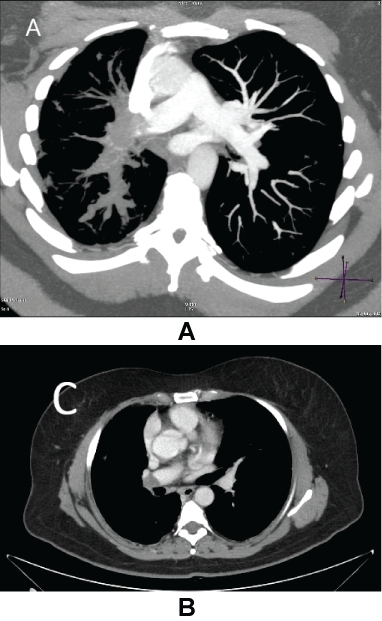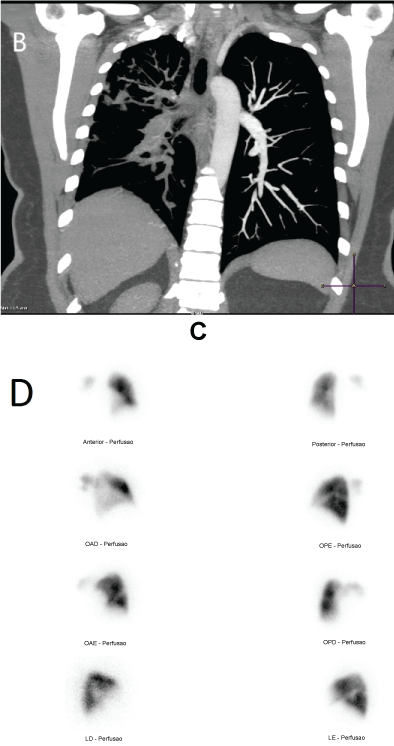A 53-year-old female presented chronic dry cough and mild dyspnea, for 6 months. Due to an erroneous interpretation of CT findings (Figure 1A), she was diagnosed as pulmonary embolism, but without improvement with 6 months of anticoagulation. Evaluated at our service with progressive dyspnea, CTPA demonstrated complete occlusion of the right pulmonary artery (Figure 1A and Figure 1B). At echo, initial systolic pulmonary artery pressure 30 mmHg, not suggestive of pulmonary hypertension. A biopsy of the right pulmonary artery demonstrated the presence of choriocarcinoma. Chemotherapy was initiated with bleomycin, etoposide, cisplatin and, finally, dactinomycin. After treatment, patient remained asymptomatic, beta-HCG decreased from 198.374 mUI/ml to 1.8 mUI/ml. After a 5-year follow-up, neither return of the disease (Figure 1C), nor signs of pulmonary hypertension were characterized (normal echo and BNP), despite the vascular perfusion defect of the right lung on V/Q scan (Figure 1D). Pulmonary hypertension occurs when more than 60% of the lung vascular bed is impaired [1]. In this case, despite the sequel on right pulmonary artery at long-term, micro-vasculature is preserved. Therefore, right pulmonary artery occlusion is not enough, per se, to induce pulmonary hypertension. Up to this date, the patient is fine without specific pulmonary hypertension therapy and remains at clinical follow-up.
All authors equally contributed to data acquisition, patient follow-up and manuscript writing.
No grants were used for this study.

Figure 1A-B: Oncologic Right Pulmonary Artery Occlusion.

Figure 1C-D: Oncologic Right Pulmonary Artery Occlusion.